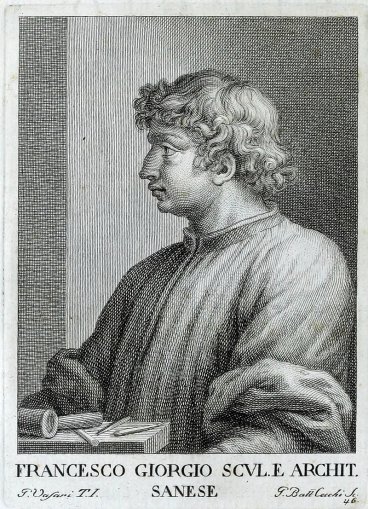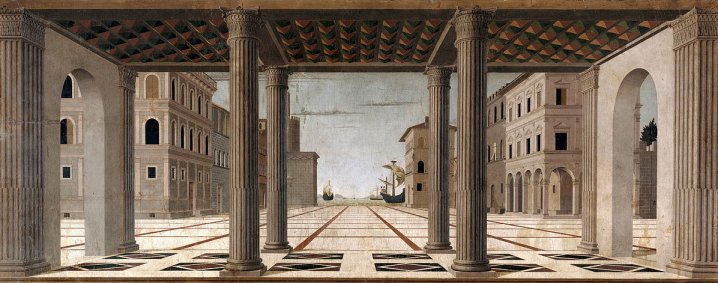
Who is the most
distinguished polymath of the Italian Renaissance? The title has to go
to Leonardo da Vinci, (15 April 1452 2 May 1519). painter, engineer,
scientist and architect. Who can match him? Lets consider Francesco di
Giorgio Martini (14391501) architect, engineer, painter, sculptor, and
writer; a name unfamiliar to most people. We will have a look at some of
his work there is much to choose from.
Leonardo has
something of a reputation for not getting his work finished Francesco
always managed it, it would seem!
He was born in 1439 in Siena; his father was a poultry dealer.
He studied, it is thought, under Sienese artist Lorenzo di Pietro, who,
like Francesco, was multi-talented: painting, sculpture, architecture.
In his early years he worked on improving the water supply to
Siena; at the same time, he produced a range of art for local churches,
and the design for the Basilica dell'Osservanza, just outside town.
During the 1470s he headed for Urbino, and worked on a range of projects
for Federico da Montefeltro. This was the time of the Pazzi conspiracy,
leading to the need for a number of fortifications around Urbino and
beyond. Much work in Urbino on churches and monasteries continued at
Cortona, he designed the church of Santa Maria delle Grazie al
Calcinaio, begun in 1484. In Gubbio he worked on the Palazzo Ducale, and
at Jesi he designed the Palazzo del Signoria.
In 1485 the city of Siena requested his return, and he was
appointed official City Engineer, for which he was well paid, necessary,
as by this time he had six children. He still found time to produce art,
such as the angel candelabras for the altar of the Duomo.
In 1490 he travelled to Florence to contribute advice on the
building of the dome of the Duomo. Here he encountered Leonardo da
Vinci. During the Italian War of 149498 he worked in Naples, giving
advice on Tunnelling and explosives.
throughout his career, Francesco was a busy writer, producing a
number of codices on various subjects, and important manuscripts on
architecture: the Opusculum de Architectura, basically an illustrated
notebook. (there is a link to the pages on the British Museum website
on
the manuscript page) and what is regraded by some as his most
significant work, the Trattato de Architettura Civile e Miltaire. This
circulated widely in Manuscript copies.
Before you click on the links below to see a selection of his
works, Here's one of art's continuing mysteries. Below is a painting,
now in Berlin, known as The Ideal City. It is one of three paintings
with this title and a similar format. No-one knows for sure who the
artists are, who commissioned them, and what purpose they served -
Urbino has been suggested as the original location, and one of the three
is there. This one is attributed (without a great deal of evidence) to
Francesco di Georgi. Did he paint it? We will never know!

Painting
Sculpture
Manuscripts